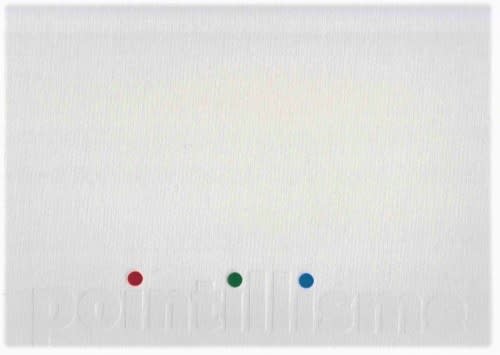Serge Charchoune Russian-French, 1888-1975
Serge Charchoune was a Russian abstract painter, known for developping his own abstact language, influenced by music and spirituality. He is also known for being the first Russian Dada poet.
Serge Ivanovitch Charchoune was born in 1888 in Buguruslan (Russia), a small borough in the province of Samara west of the Urals. From modest descent, his application is rejected form the School of Fine-Arts of Kazan due to his inaptitude to drawing. After a stay in Moscow where he discovers the avant-gardes like cubism and fauvism and meets Ilia Machkov, Natalia Goncharova, and Mikhail Larionov, he is called to accomplish his military service, but deserts after only a few months and flees to Berlin before reaching Paris where he settles in 1912, studying at the Académie de la Palette under the cubist painter Henri Le Fauconnier.
At the beginning of World War I, Charchoune takes refuge in Barcelona with his partner the Moscow sculptor and painter Hélène Grunhoff, a student of Alexander Archipenko, he met in Paris. The contacts with the circle of Francis Picabia and the publishing in Barcelona of the first edition of the Revue 391 initiateCharchoune to a new anti-academy vision of Art that liberates him of all former complexes and allows him to abolish the hierarchy between Art Major and Art Minor. He finally dares to be his true self and asserts his innate nature, leading him towards abstraction and ornamentation.
When Charchoune returns to Paris at the beginning of the 1920's, he joins the Parisian Dadaist group, that will influence mostly his drawings and writings. In the field of painting though, he evolves towards what he calls "ornamental cubism", combining at the same time the analytic phase of cubism, meaning the deconstruction of the planes, and his taste for ornament. This trend is confirmed on the occasion of a long stay in Berlin in 1922-23, where the artist exhibites almost 40 "ornamental cubist" paintings at the Galerie Der Sturm.
Charchoune later moves to a studio in Montparnasse and discovers Purism which he immediately blends into a sumptuous series of paintings made between 1925 and 1930, from which we can still feel the influence in his post-war works. It is the happiest and most successful time in Charchoune's life during wich he is blessed with both personal and commercial success.
His meeting with French cubist painter Amédée Ozenfant profoundly influences him and changes the way he approaches his own art. In correlation with his growing interest for the anthroposophy of Rudolph Steiner, his painting becomes at the same time more rigorous and progressively imbued with spirituality.
Forced into misery after the Great Crash in 1929, Charchoune doesn't paint as much and only in small formats during the 1930's. He also takes this period as an opportunity to experiment with the ideas ans movements of his time: from Dadaist tendencies to abstract expressionism, anticipation of Action Painting, constructivism or shape geometry, under the influence of the group "Cercle et Carré" (Circle and Square) in 1930.
In the 1940's, Charchoune's financial situation improves and he paints in formats a bit larger, referring often to Analytic Cubism or Purism in another series of magnificent canvases, where he starts to introduce the theme of music, so vital et inspiring for him, using the motif of the deconstructed violin.
Starting from the 1950's, Charchoune asserts himself in the most original and individual way. Far beyond the cubist, purist or Dadaist influences, he immerses himself in an art that's truly personal, moved by music and mysticism. From that point forward, Charchoune's art can be described as "Neo-Symbolist Abstraction". That point marks the culmination and the apogee of his painting. The maturity and perfect command of his art shines through the research on the materiality of the pictorial surface: superposed layers, textures, prints and the use of a diversity of brushstrokes.
Charchoune's late works are infused with the symbolist influence of his youth in early 20th century Russia, often imbued in theosophy and cultivating encounters between painting and music.
In his ultimate works from the 1960's, Charchoune's colors are progressively covered by all the nuances of white leading to almost entirely monochromatic canvases.





